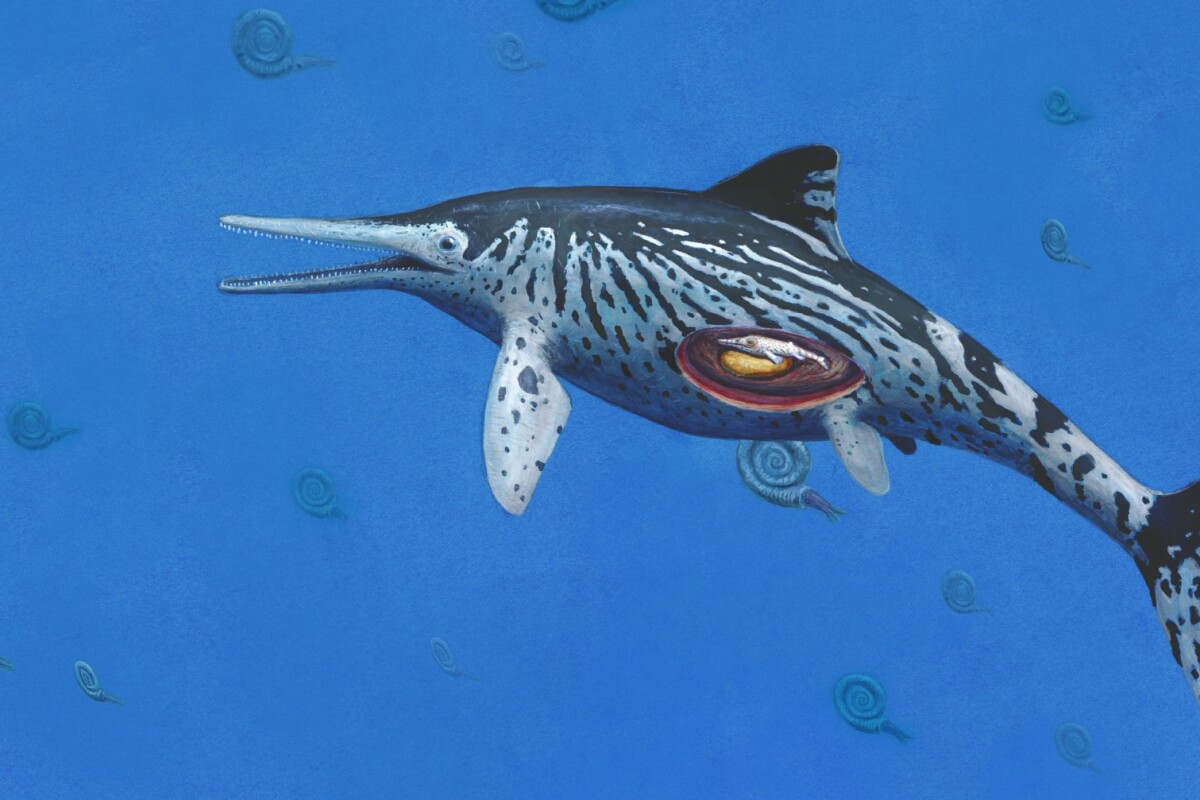
The remains of a huge sea creature with huge teeth have been found in the Swiss Alps.
One of the largest animals on Earth
Paleontologists discovered fossils representing three new ichthyosaurs. They may have been among the largest animals to have roamed the earth. Unearthed between 1976 and 1990 in the Swiss Alps, the remains include tooth larger than a bowling alley. The width of the root is twice larger than any known aquatic reptile. The previous record-holder was that of a 15-meter long ichthyosaur. Over 200 million years ago, the rock layers were covering the seafloor. However, with the folding of the mountains, they ended up at an altitude of 2,800 meters. The skeletal remains also contain the largest trunk vertebrae on the continent. Additionally, it is similar to the largest known marine reptile fossil- a 21-meter-long Shastasaurus sikkanniensis from Canada
Dr. Heinz Furrer, one of the co-authors was a part of the team involved in recovering the fossils. It was during the geological mapping in the Alps’ Kössen Formation. The study on gigantic animals is published in the Journal of Vertebrae Paleontology. “The world’s longest ichthyosaur; with the thickest tooth found to date and the largest trunk vertebra in Europe!” exclaimed Dr. Furrer. He is currently a retired curator at the Paleontological Institute and Museum at the University of Zurich.
P Martin Sandler, the lead author of the study is hoping that “maybe there are more remains of the giant sea creatures hidden beneath the glaciers”. He believes that the bigger the fossil, the better it is. “There are distinct selective advantages to large body size. Life will go there if it can. There were only three animal groups that had masses greater than 10–20 metric tonnes: long-necked dinosaurs (sauropods); whales; and the giant ichthyosaurs of the Triassic,” he added.
Ichthyosaurs: Here’s what you need to know about them
The 80-ton reptiles roamed the Panthalassa, the ocean surrounding the Pangea 205 million years ago during the late Triassic period. The new study revealed that they created forays in the shallow seas on the eastern side of the Pangea. Ichthyosaurs first emerged around 250 million ago with the Permian extinction. During this period about 95 percent of the marine species went extinct. In the middle of the Triassic period, the ichthyosaurus reached its zenith. Very few of them were living during the Cretaceous period. However, most of them were smaller in size.
They had elongated bodies with erect tail fins. Previously giant ichthyosaurs have been unearthed in North America, the Himalayas, and New Caledonia. Hence, this study expands their range. The species has also been discovered in South America, Asia, Australia, and Europe. While the smaller ones had teeth, the larger ones were mostly toothless. According to one theory, this is because they feed by suction and do not grasp their prey.
“The bulk feeders among the giants must have fed on cephalopods. The ones with teeth likely feed on smaller ichthyosaurs and large fish,” stated Sande. The tooth described in this study is the second instance of teeth in larger ichthyosaurs.“It is hard to say if the tooth is from a large ichthyosaur with giant teeth or a giant ichthyosaur with average-sized teeth. Ichthyosaurs have a feature in their teeth that is nearly unique among reptiles: the infolding of the dentin in the roots of their teeth. The only other group to show this are monitor lizards,” added Sander.
